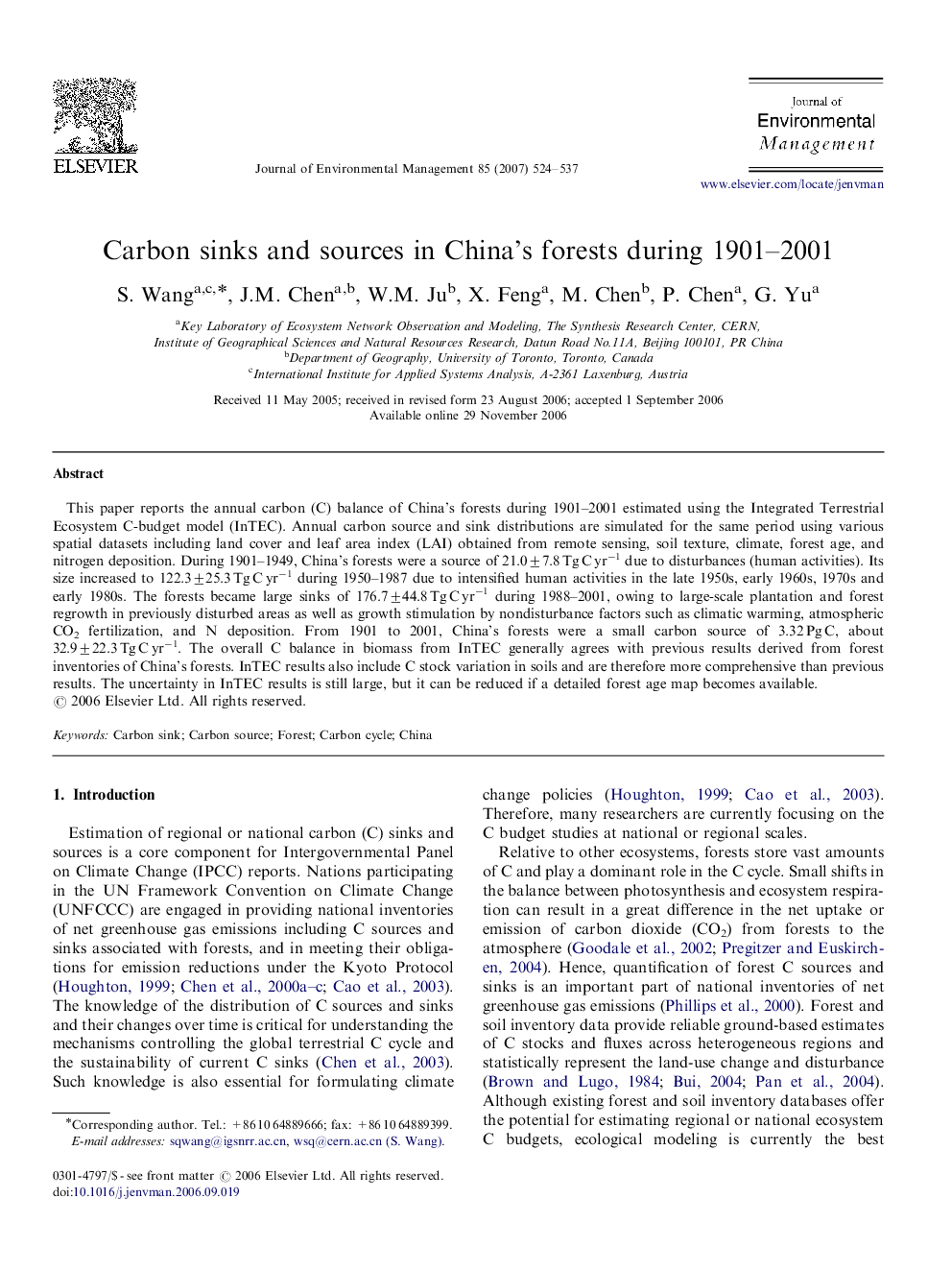| Article ID | Journal | Published Year | Pages | File Type |
|---|---|---|---|---|
| 1058670 | Journal of Environmental Management | 2007 | 14 Pages |
This paper reports the annual carbon (C) balance of China's forests during 1901–2001 estimated using the Integrated Terrestrial Ecosystem C-budget model (InTEC). Annual carbon source and sink distributions are simulated for the same period using various spatial datasets including land cover and leaf area index (LAI) obtained from remote sensing, soil texture, climate, forest age, and nitrogen deposition. During 1901–1949, China's forests were a source of 21.0±7.8 Tg C yr−1 due to disturbances (human activities). Its size increased to 122.3±25.3 Tg C yr−1 during 1950–1987 due to intensified human activities in the late 1950s, early 1960s, 1970s and early 1980s. The forests became large sinks of 176.7±44.8 Tg C yr−1 during 1988–2001, owing to large-scale plantation and forest regrowth in previously disturbed areas as well as growth stimulation by nondisturbance factors such as climatic warming, atmospheric CO2 fertilization, and N deposition. From 1901 to 2001, China's forests were a small carbon source of 3.32 Pg C, about 32.9±22.3 Tg C yr−1. The overall C balance in biomass from InTEC generally agrees with previous results derived from forest inventories of China's forests. InTEC results also include C stock variation in soils and are therefore more comprehensive than previous results. The uncertainty in InTEC results is still large, but it can be reduced if a detailed forest age map becomes available.
